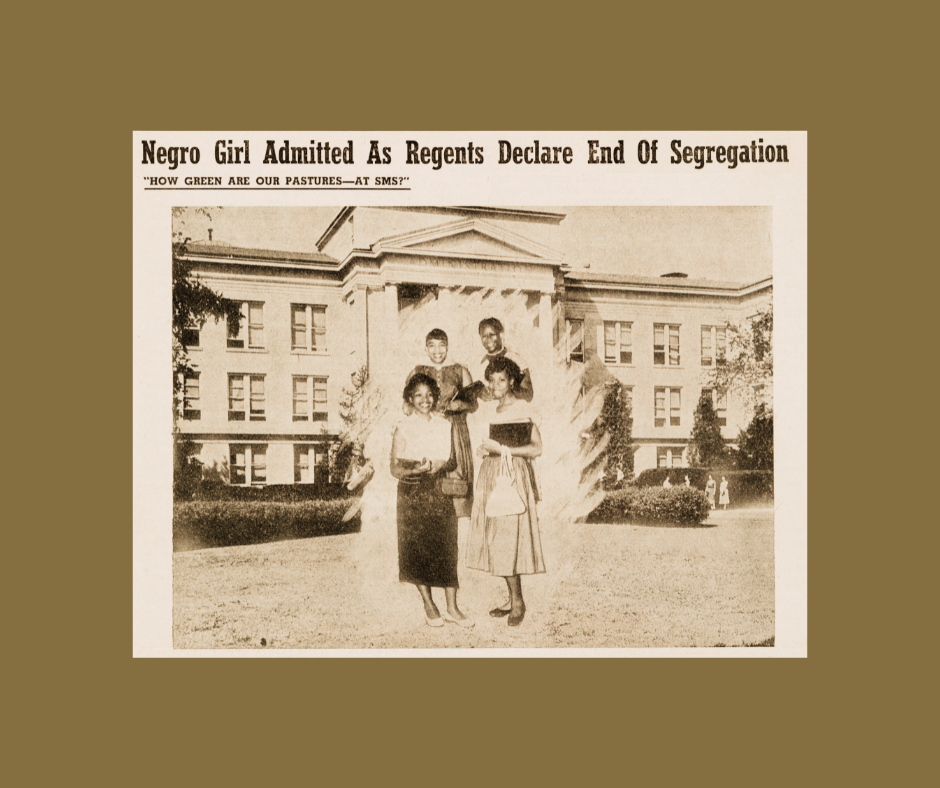Missouri State University was founded in 1905 as the Fourth District Normal School. Normal Schools trained teachers. By the end of 1905, there were six State of Missouri normal schools:
five for white students and one for Black. White students could go to the closest institution thereby keeping down costs. Black students could go only to Lincoln Institute, later College, and then University, in Jefferson City.
It was not always possible for the smaller Lincoln to offer the variety of courses that the other schools did. Over time, Lincoln and the other schools added offerings to the curriculum with the majority of the courses continuing to be for teacher training.
Lincoln Institute was founded by emancipated Black Civil War soldiers in 1866. It is the is the only United States’ university founded by Black soldiers from any war.
In 1896, in Plessy v. Ferguson the U.S. Supreme Court established the legality of separate but equal facilities for Black and white Americans. In 1950, New Lincoln School was the school for
Black children in Springfield. In October of 1950, Mary Jean Price, salutatorian of her class at New Lincoln, applied for admission to Southwest Missouri State College (formerly Missouri
State Normal #4). Her arguments were that she wanted to be a librarian and that Lincoln College offered no library classes and that it would be a financial hardship to go to Lincoln. Surviving university documents note that she was very well qualified to matriculate. It was determined to reject her application solely on the basis of her race since separate but equal could be argued as a few library classes were to be added to the Lincoln College catalog. Unfortunately, this decision dashed Price’s plan to attend college.
In 2010, Mary Jean Price Walls was awarded the first honorary undergraduate degree ever conferred by Missouri State University. In 2016, The Multicultural Research Annex at Missouri
State University was named in her honor. Price’s son had discovered her history while a student at Missouri State and made the information known.
Price’s college application came four years too soon. The landmark Brown versus Board of Education of Topeka ruling, declaring school segregation illegal, was handed down in May 1954. S.M.S. was desegregated for the Fall 1954 semester. The first Black student to be accepted for enrollment was Freda Marie Thompson. Like Price, she had sent in her application while S.M.S. was still segregated. Like Price, she was salutatorian of her Springfield Lincoln High School class. Unlike in Price’s case, desegregation had just become the law of the land and the college Board of Regents was about to desegregate the school. Four short years made a major difference in educational opportunities.
The “Timeline of Black Education: School Segregation in the U.S., Missouri, and Springfield” showcases national, state, and local Black educational history through 4 pop-up panels. The timeline was originally part of the exhibit Community Cornerstones: Springfield’s Black Educators shown at the History Museum on the Square. This educational display is now available to rent for use in schools, libraries, businesses, and other community organizations to share the history of school segregation and the impact of Black educators on a national and local level.
Additional resources provided with the display rental include the video Sharing Memories of Community Cornerstones featuring interviews with former Lincoln Students (M&G History Keepers), biographies of Springfield’s Black Educators, and a detailed timeline of Black educational history. This timeline display was made possible by the Community Foundation of the Ozarks and contributions from the M&G History Keepers.
You can learn more and reserve the timeline display at:
https://historymuseumonthesquare.org/education/displays/
By Joan Hampton-Porter
Curator, History Museum on the Square






